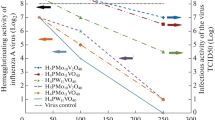Abstract
WHEN disrupted staphylococcal cells are incubated with 14C-labelled amino-acids and a source of energy, the radioactive amino-acids become incorporated into the protein of the preparation. When only one amino-acid is present in the incubation mixture, incorporation appears to take place by a process of exchange occurring between the added 14C-labelled amino-acid (or a metabolite thereof) and corresponding residues in the cell protein. In many cases the incorporation can be largely abolished by removal of nucleic acid from the disrupted cells, and then restored by addition of staphylococcal nucleic acid; but the magnitude of these effects varies with the amino-acid the incorporation of which is being studied1. These differing effects could be explained if the incorporation of specific amino-acids were activated by specific portions within the poly-nucleotide structure, some parts of which were more easily damaged, or replaced, than others.
Similar content being viewed by others
References
Gale, E. F., and Folkes, J. P., Nature, 173, 1223 (1954); Biochem. J., 59, 661, 675 (1955).
Markham, R., and Smith, J. D., Biochem. J., 52, 558 (1952).
Dounce, A. L., Enzymologia, 15, 251 (1952)
Author information
Authors and Affiliations
Rights and permissions
About this article
Cite this article
GALE, E., FOLKES, J. Promotion of Incorporation of Amino-acids by Specific Di- and Tri-nucleotides. Nature 175, 592–593 (1955). https://doi.org/10.1038/175592a0
Issue Date:
DOI: https://doi.org/10.1038/175592a0
- Springer Nature Limited
This article is cited by
-
Comparing experimental systems: Protein synthesis in microbes and in animal tissue at Cambridge (Ernest F. Gale) and at the Massachusetts General Hospital (Paul C. Zamecnik), 1945?1960
Journal of the History of Biology (1996)
-
Incorporation of Amino-Acids by Disrupted Staphylococcal Cells
Nature (1958)





